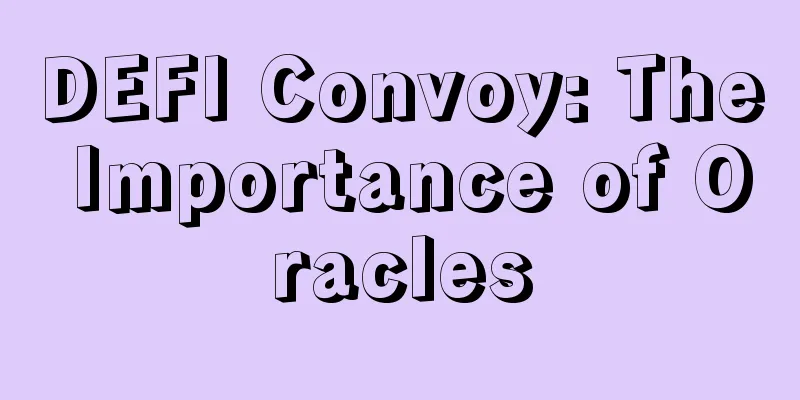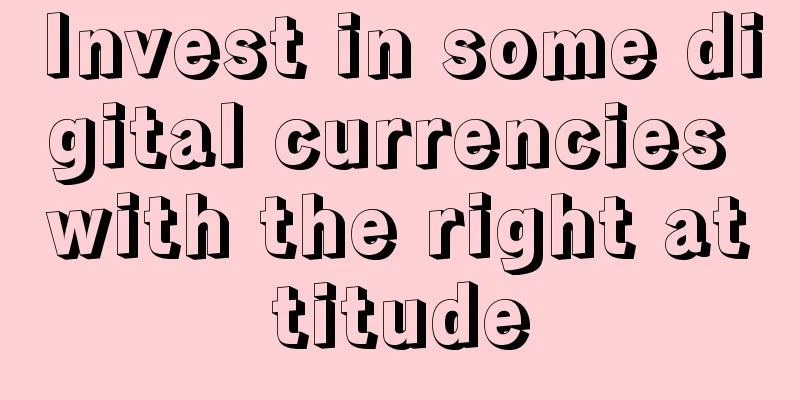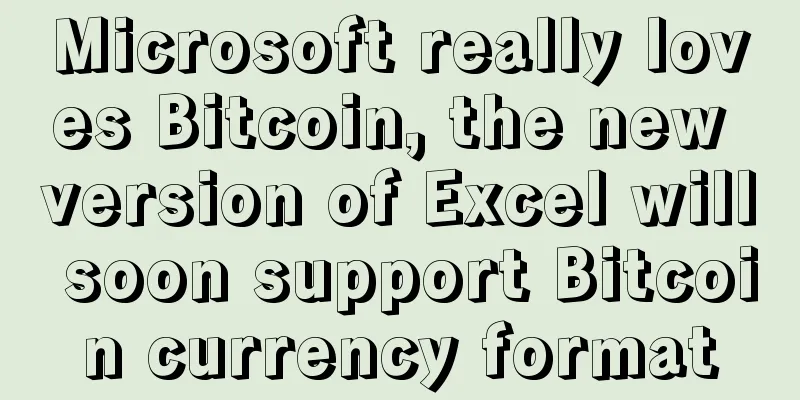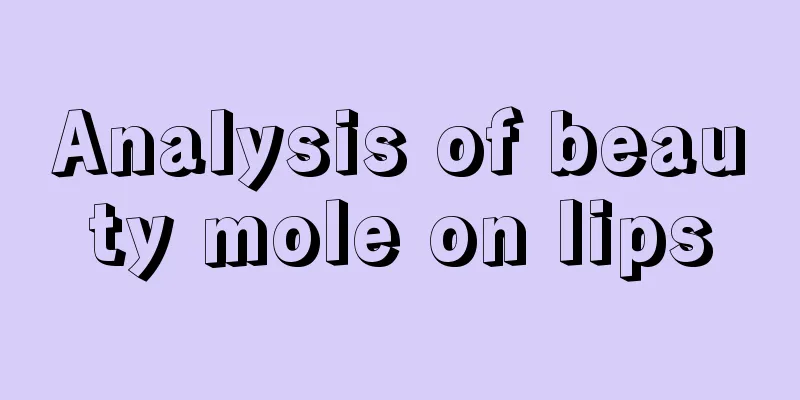DEFI Convoy: The Importance of Oracles

|
Before exploring some emerging solutions, I will first analyze some popular DeFi projects and the oracle systems they are using, such as their pros and cons, and then give some suggestions on how to build a fair oracle/data retrieval ecosystem. Traditional financial systems require intermediaries, which result in single points of failure. They are prone to corruption, fraud, security incidents, etc. Smart contracts and decentralized networks give us the opportunity to rebuild these systems, which are accessible to ordinary people and can improve traditional financial products built on these systems, especially lending. DeFi provides us with a new, transparent financial system that does not rely on intermediariesA common theme among DeFi products is its hybrid protocols, which take volatility out of the equation while providing the benefits of a decentralized network. This is achieved by combining crypto assets with traditional assets, especially those tied to a USD peg. MakerDao is the most well-known example, which uses a hybrid system to maintain an average 1DAI=$1 ratio and requires mining DAI (a token worth $1) by locking up volatile assets. There are other hybrid systems that use concepts like "supply elasticity", such as Ampleforth or the Diameter Base Protocol, which sounds a bit old now. In response to changes in demand, they adjust the circulating supply through a Rebase mechanism. The purpose of using a rebase mechanism is to keep prices stable by constantly balancing demand with circulating supply, but this mechanism doesn’t work well when the market is in a frenzy, as we have recently experienced. The price of Ampleforth soared to an all-time high, and due to a bunch of aggressive rebasing measures (i.e. airdropping tokens to holders), once the price started to fall, it fell fast and hard. Oracles are the foundation of the entire ecosystem because all applications rely on accurate data. Compound is another DeFi product that allows assets to be borrowed and loaned through collateral, with interest rates adjusting based on borrower/lender demand. The Compound network is governed by COMP holders, who can vote on the future of the network through a proposal system - the more tokens held, the more weight the vote has. This will have interesting consequences as the number of administrators changes. It sometimes calculates an average based on multiple oracle reports, and if there are not so many administrators providing data, it may calculate an incorrect price, which will have a serious impact on a large number of borrowers/lenders. As DeFi products rise, ChainLink is undoubtedly the winnerOver the past 18 months, the use of oracles has grown rapidly, and some of the most influential DeFi teams are using them, including Kyber Network, Fulcrum, Opium Network, Synthetix, etc. A key advantage of Chainlink is that it references multiple oracles to derive prices. Bzrx recently had an accident because it only relied on price data provided by Kyber Network. This means that a sudden drop in Kyber will cause Bzrx to liquidate its positions. With Chainlink, there is a decentralized price data supply to avoid this from happening. Nonetheless, according to a research paper published by Bowen Liu and Pawel Szalachowski of the Singapore University of Technology and Design, Synthetix’s ETH/USD oracle data has a regular price deviation of an average of 2%. While this is a high bar for now, we must work towards more accurate price information and more dynamic systems, which is certainly what Chainlink is doing, but wouldn’t it be better to have healthy competition? Currently, most price feed oracles often deviate from the actual data. A few percentage points of deviation may not seem like much, but when we build a financial system that provides information about lending, liquidation events, and interest rates, we need accurate data. The infamous “flash loans” or quick liquidations in DeFi products are often associated with price oraclesIf I have a DeFi product and I pull its price to, say, the price of BAT on an exchange, and people are borrowing this DeFi product at the price of BAT, then it only takes one big sell on that exchange to liquidate any leveraged BAT position. Using multiple data streams and aggregators can greatly reduce the risk of troublemakers who have the ability to drive markets quickly. There are some new competitors in the DeFi oracle spaceDIA is known for building an ecosystem that provides open financial data for smart contracts. It provides multiple price streams and obtains data from multiple sources, including exchanges, other blockchains, European Central Bank foreign exchange rates, ITINs (International Token Identification Numbers), SONIA, SOFR & €STR Overnight Rates (Secured Overnight Financing Rates for US Dollars and Overnight Risk-Free Rates for Euros). They aim to be the "Wikipedia of financial data", which means that the community can vote on data in an open source form, rather than having it decided by a central committee. DIA does not manage, obtain, or verify data internally, instead, these activities are carried out by its holders through cryptoeconomic incentives and staking its governance tokens. This design greatly improves transparency and is a bottom-up system for cleaning, aggregating, and delivering financial data to APIs and Ethereum's oracle system. The database can handle a variety of different data streams, from high-frequency trading APIs to data that never changes and is inaccessible in high-performance key-value databases. The interesting thing about DIA is that it supports a variety of traditional financial data and crypto market data at the same time, and can customize exclusive price data according to user requirements. The aforementioned paper by Bowen Liu and Pawal Szalachowski points out that the oracle systems used by applications like Synthetix and Compound lack transparency, which makes it difficult to detect improper operations. When asked directly in a CryptoDiffer AMA what advantages DIA has compared to other competitors, Paul Claudius of the DIA data team replied: “We are not a new database that provides complex price models. Instead, we focus on a Wikipedia-style approach where everyone can participate and comment on the work of the community for the sake of community development. We issue our governance token as an incentive for data providers and community members who dig deep into data sources.” In the coming months, it will become a community-run DAO, and our team (or the wider community) can then start creating DeFi products based on this data ecosystem, and the price feeds they use will be regularly audited by the community. But what makes a good oracle? Here are some evaluation criteriaI think it’s time to talk about “what a good oracle is” and “how we can build a good data system”. The factors listed here are not all, but they can help readers better understand which direction we should go. Governance
transparency
Data Operations
Although there are many factors to consider, the above are good reference directions when you are choosing an oracle for your project. The oracle ecosystem deserves our continued attention, because with the rise of DeFi applications, oracles will be subject to more scrutiny. After all, these DeFi applications require accurate and reliable data. Otherwise, people may lose a lot. But I would encourage people to really understand the impact that oracles have and understand which oracles the applications they are using rely on for data. |
<<: EIP-1559 could make Ethereum deflationary - Money supply issues intensify discussion
Recommend
In which lunar month are women most likely to have romantic relationships?
Women born in different months have different for...
What kind of palm lines can a woman have to marry into a wealthy family?
It seems that marrying into a wealthy family is e...
Where are the 5 smart moles?
Where are the 5 smart moles? Mole in the Palace o...
Physical characteristics of men that make women live a good life
Physical characteristics of men that make women l...
The hearts of these people are like iron.
Some people give people the impression that they ...
There is a mole behind the belly button
Waist mole diagram There is a mole behind the bel...
What kind of woman has a happy marriage?
Of course, we all hope that our marriage will be ...
Bitcoin network electricity consumption could be as high as Denmark's by 2020
According to Sina Technology, the US technology w...
A mole on a man's chest means "lofty ambitions"
Is it good for a man to have a mole on his chest?...
The Evolution and Future of Bitcoin Mining: Are Mining Pools a Problem?
Bitcoin advocate and educator Bitcoin Mechanic de...
Bitcoin surpasses Netflix in market value after breaking through $4,500
According to CoinDesk data, Bitcoin rose about 2%...
Is it good for a man to have an overbite?
How to interpret a man's overbite? Under norm...
How to read your future destiny from palmistry
How to read your future destiny from palmistry St...
2017 ZEC virtual currency graphics card computing power test ranking
As we all know, Bitcoin and Litecoin cannot be mi...
What does a mole on a woman's thigh mean?
Legs are as important as hands for women, because...









